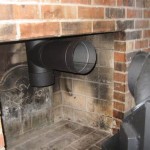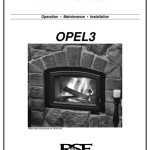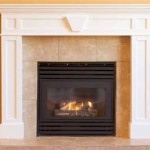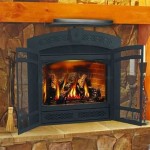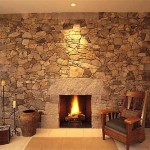The Enduring Allure of the Antique French Fireplace Mantel
Antique French fireplace mantels represent a captivating blend of artistry, history, and functionality. These architectural elements, salvaged from chateaus, manor houses, and grand apartments, offer a tangible connection to past eras and infuse contemporary spaces with a sense of timeless elegance. The acquisition of an antique French mantel is often viewed as an investment in both aesthetics and historical preservation, demanding careful consideration of factors such as provenance, material, style, and condition.
The term "antique" in the context of fireplace mantels generally refers to pieces that are at least 100 years old. True antiques hold significant intrinsic value, reflecting the craftsmanship and design sensibilities of their respective periods. Identifying a genuine antique requires expertise and attention to detail; characteristics such as hand-carved details, the presence of original paint or finishes – even if distressed – and the type of stone or wood used can provide valuable clues about a mantel's age and authenticity. Replicas and reproductions, while aesthetically pleasing, do not possess the same historical significance or monetary value as authentic antique pieces.
The history of fireplace mantels in France is intimately linked to the evolution of heating technology and architectural styles. Initially, fireplaces were primarily functional, serving as the primary source of heat and light. Over time, they evolved into elaborate decorative features, reflecting the wealth and status of the homeowner. The introduction of chimneys in the Middle Ages allowed for larger and more ornate fireplaces, leading to the development of distinct styles that characterized different periods.
Identifying Key Periods and Styles
French fireplace mantels showcase a rich tapestry of styles, each reflecting the prevailing aesthetic trends of its time. Understanding these styles is crucial for identifying and appreciating the unique characteristics of a particular mantel.
The Louis XIII style (early to mid-17th century) is characterized by its robust and symmetrical design, often featuring heavy moldings, pilasters, and geometric carvings. Materials commonly used include limestone, marble, and oak. The overall impression is one of strength and formality, reflecting the grandeur of the Baroque era.
The Louis XIV style (late 17th to early 18th century) builds upon the Baroque foundations of the Louis XIII period, incorporating even more elaborate ornamentation. Common features include intricate floral carvings, fruit garlands, and allegorical figures. Marble, particularly colored varieties, became increasingly popular. The emphasis was on opulence and dramatic visual impact, reflecting the grandeur of the Sun King's court.
The Regency style (early 18th century) represents a transition between the Baroque and Rococo periods. While retaining some of the formality of the Louis XIV style, the Regency introduces lighter and more asymmetrical elements. Scrollwork, shells, and delicate floral motifs are common features. The Regency mantel sought to achieve a more graceful and refined aesthetic.
The Louis XV style (mid-18th century), also known as Rococo, is characterized by its flowing lines, asymmetrical compositions, and elaborate ornamentation. Shell motifs, acanthus leaves, and C-scrolls are prevalent. Materials include marble, limestone, and painted wood. The Louis XV style embodies a sense of whimsy and elegance, reflecting the playful spirit of the period.
The Louis XVI style (late 18th century) marks a return to classical principles, influenced by the rediscovery of ancient Roman and Greek art. Symmetrical designs, straight lines, and geometric shapes are characteristic. Common motifs include fluting, rosettes, and Greek keys. Marble, particularly white marble, was favored. The Louis XVI style exudes a sense of order and restraint, reflecting the neoclassical ideals of the time.
The Directoire and Empire styles (late 18th and early 19th centuries) further emphasized classical elements, drawing inspiration from ancient Roman architecture. Symmetry, clean lines, and geometric forms are predominant. Common motifs include laurel wreaths, eagles, and classical figures. Marble, bronze, and mahogany were popular materials. These styles project an image of imperial power and grandeur.
The Belle Époque style (late 19th to early 20th century) encompasses a range of eclectic influences, including Art Nouveau and Neo-Gothic. Mantels from this period often feature intricate carvings, floral motifs, and decorative tiles. A variety of materials, including marble, wood, and metal, were used. The Belle Époque style reflects a sense of optimism and innovation.
Materials Commonly Used in Antique French Fireplace Mantels
The choice of materials in antique French mantels was dictated by availability, cost, and the desired aesthetic effect. Certain materials are more commonly associated with specific styles and periods.
Marble was a highly prized material, particularly for grand fireplaces in wealthy homes. White marble, such as Carrara, was favored for its purity and elegance. Colored marbles, such as Rosso Verona and Breccia, were used to add visual interest and create a more opulent effect. Marble mantels were often adorned with intricate carvings and polished to a high sheen.
Limestone was a more affordable and readily available alternative to marble. French limestone, such as Pierre de Bourgogne, was favored for its durability and warm, natural tones. Limestone mantels were often simpler in design than marble mantels, but they still possessed a timeless elegance. The texture of the stone itself provided visual interest.
Wood was another popular material, particularly for fireplaces in more modest homes. Oak, walnut, and fruitwoods were commonly used. Wooden mantels were often painted or stained to enhance their appearance. Intricate carvings and moldings could add significant detail to wooden mantels.
Painted Wood Painted wood fireplace mantels are a beautiful staple among antique French fireplace mantels. Often painted in off-whites, delicate pastels and neutrals, these mantels add understated elegance and a touch of effortless beauty to any room.
Assessing Condition and Authenticity
Before acquiring an antique French fireplace mantel, it is essential to carefully assess its condition and authenticity. This process requires a keen eye and a thorough understanding of antique construction techniques.
Condition: Examine the mantel for signs of damage, such as cracks, chips, or repairs. Small imperfections are to be expected in antique pieces, but significant damage can compromise the structural integrity and aesthetic value of the mantel. Pay close attention to areas that are prone to wear and tear, such as the corners, edges, and hearth. Check for evidence of water damage or insect infestation.
Authenticity: Look for signs of hand craftsmanship, such as chisel marks or variations in carving details. These imperfections are indicative of a genuine antique piece. Examine the back of the mantel for evidence of age, such as oxidation or the presence of old joinery techniques. Compare the mantel to known examples of similar styles and periods. Consult with an experienced antique dealer or appraiser to obtain an expert opinion on the mantel's authenticity.
Provenance: Understanding the history of a fireplace mantel can significantly enhance its value and appeal. Research the mantel's origin and previous ownership, if possible. Provenance information can be obtained from antique dealers, auction houses, or historical societies. A well-documented provenance adds a layer of intrigue and historical significance to the mantel.
The installation of an antique French fireplace mantel requires careful planning and execution. It is essential to ensure that the mantel is properly supported and securely attached to the wall. Consult with a qualified contractor or mason to ensure that the installation is carried out safely and correctly. The surrounding fireplace opening should be appropriately sized and finished to complement the mantel's design. Consider the overall aesthetic of the room and select materials and colors that harmonize with the mantel's style. An antique French fireplace mantel is more than just a decorative element; it is a piece of history that deserves to be treated with respect and care.

Antique French Limestone And Marble Fireplace Mantels For Interiors Historic Decorative Materials A Division Of Pavé Tile Wood Stone Inc

Antique Fireplace Mantels Authentic Provence Italian French Antiques

Antique French Limestone And Marble Fireplace Mantels For Interiors Historic Decorative Materials A Division Of Pavé Tile Wood Stone Inc

Antique Louis Xvi French Marble Fireplace Mantel 1850s For At Pamono
Ambella French Fireplace Mantel Amherst Fire Screen Matching Items Horchow

Antique French Limestone And Marble Fireplace Mantels For Interiors Historic Decorative Materials A Division Of Pavé Tile Wood Stone Inc

Marble Fireplaces French Style White Fireplace Mantel Mfp 1580 Fine S Gallery Llc
Fine Antique French Fireplace Mantels 1 Marshall Galleries

Antique French Fireplace De Opkamer Floors And Fireplaces

Marble French Fireplace Mantel Marvelous Design
Related Posts


